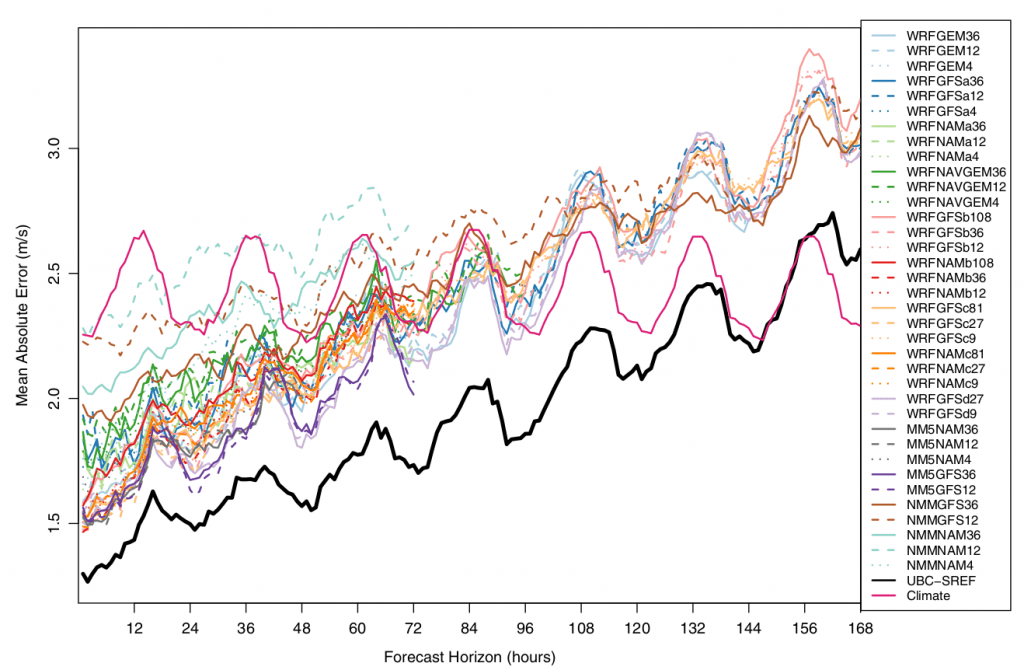Atmospheric Sciences Research Scientist Dr. David Siuta recently had a manuscript titled Benefits of a Multimodel Ensemble for Hub‐Height Wind Prediction in Mountainous Terrain accepted for publication in Wind Energy detailing the benefits of using an ensemble forecast for energy planning.
Integration of renewable wind energy sources into the electric transmission grid has created new challenges for energy planners. Winds are highly variable and power generated by wind fluctuates with wind speed. Energy planners need to be able to anticipate these fluctuations to keep electricity supplied to the grid in sync with demand. Numerical weather prediction is key to effectively integrate wind resources, which supplies future estimates of wind power generation. Weather forecasts are used several hours to several days in advance to manage which generation sources will be used to supply power to the grid, which resources can be freed up to perform maintenance, and how much electricity is available to be traded on the market.
Weather forecasts, however, are imperfect due to incomplete initial conditions, assumptions in model physics, and the poor representation of terrain and complex flows. In the past, small reductions in forecast error have been shown to result in substantial annual savings to electric grid operators through optimized grid planning strategies. Dr. Siuta’s recent publication explains one method to achieve reduced forecast error through use of ensembles. He used a 36-member mesoscale ensemble forecast system run by the University of British Columbia to show that, on average, reductions in forecast error by using an ensemble mean forecast over a single-model forecast is between 10 and 20% through a seven-day forecast horizon. Additionally, the ensemble mean provided a minimum of an additional two days of forecast skill over the ensemble member forecasts when compared to a reference climatology forecast (see figure). In the same work, Dr. Siuta also shows a method to produce calibrated probabilistic forecasts and the effect of an ensemble on reducing forecast uncertainty.

